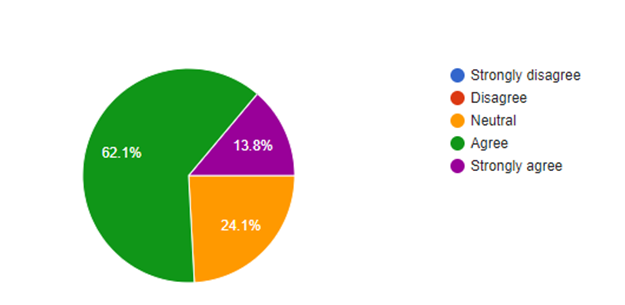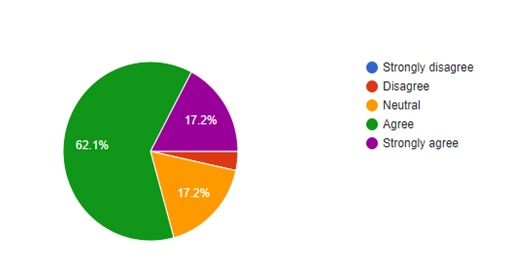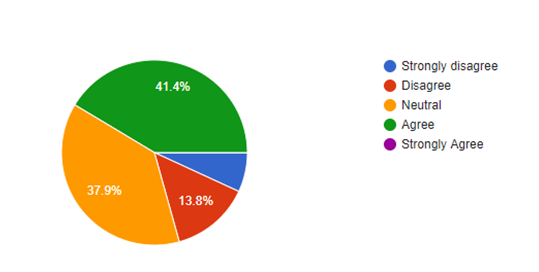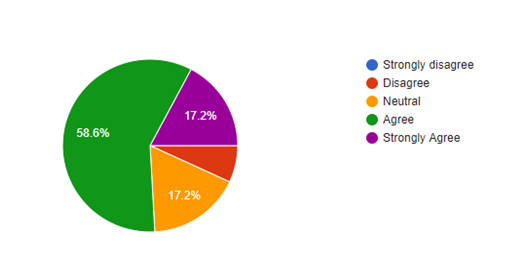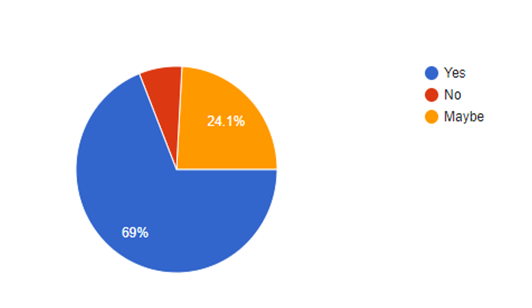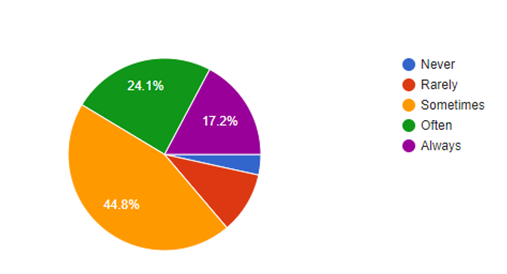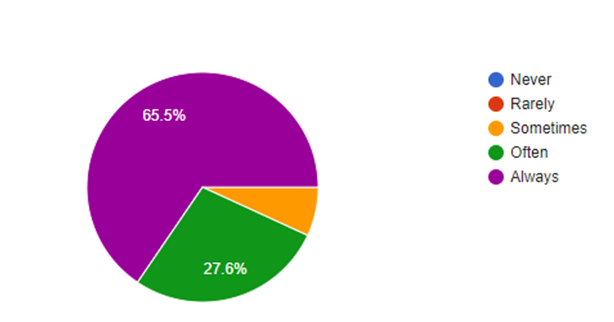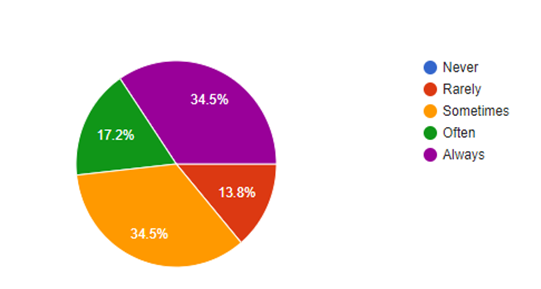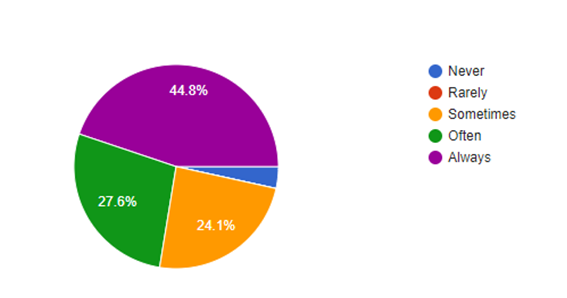Investigating the Challenges of Utilizing English as a Medium of Instruction in Teaching English as a Second Language Classroom
- H.A. Nelumi Bandara
- 2350-2357
- Aug 7, 2024
- Education
Investigating the Challenges of Utilizing English as a Medium of Instruction in Teaching English as a Second Language Classroom
H.A. Nelumi Bandara
University of Kelaniya, Sri Lanka
DOI: https://dx.doi.org/10.47772/IJRISS.2024.803172S
Received: 21 June 2024; Revised: 27 June 2024; Accepted: 01 July 2024; Published: 07 August 2024
ABSTRACT
The research investigates by providing an overview of the concept of Language Policy and Planning (Status and Acquisition planning) in related to using English as a Medium of Instruction (EMOI) in English as a Second Language (ESL) teaching context. The main aim of the research is to identify the challenges faced by ESL teachers in using EMOI and identifying strategies to minimize the challenges. The research question focuses on what are the Challenges faced by ESL teachers in using EMOI within the classroom and what are the strategies to minimize the challenges. The research adopted a quantitative research design. In accumulating data, a questionnaire was conducted and distributed to randomly select 29 ESL teachers in the Kurunegala Educational Zone. The core of the study reveals that the foremost challenges that English medium teachers encountered were the challenges in formulating and organizing effective classrooms and explaining lesson contents and subject matters, due to no demonstration or modeling of the instructions and further it is investigated that the challenges have a direct impact on the students’ performance too. It is manifested that using EMOI has been a great challenge for teachers in the academic performance of students as well. The inability to have a face-to-face discussion due to limited time frame can be pinpointed as a major limitation in the research study. The study recommended that the government be responsible for setting and monitoring the implementation of education reforms in schools with the help of implementers, particularly teachers.
Keywords: Language Policy and Planning (LPP), English Medium of Instruction (EMOI policy), English as a Second Language, Challenges
INTRODUCTION
Background of the Study
Language is an important tool for communication hence, teaching and learning can only take place when language is selected and used as the Medium of Instruction (MOI). Hence, if the native language (L1) is used as a MOI in schools, it enhances effective teaching and learning, while if a non –native language (L2) is used as a MOI it becomes challenging to teach and learn. If teachers and learners get challenging when utilizing the MOI, the teaching and learning process cannot be effective (Malekela, 2004). “The rationale for the reintroduction of English MOI in Sri Lanka in 2001 was soon broadened to include the national political objectives of unity, espousing the benefits of students from the two ethnic groups learning in a common language, English” (Medawattegedara, Senarathna, & Yogaraja, 2016, p.66).This research accumulates and analyses the information concerning four main challenges encountered by English medium teachers in the Kurunegala Education Zone in Sri Lanka and it can be illustrated as; challenges in formulating and organizing effective classroom activities, challenges in choosing ‘only English’ to explain lesson contents and subject matters, challenges in demonstrating or modeling of the instructions and the challenges related to the ability of students’ understanding when giving instruction using English.
Research Aims
The main aim of the study is to identify the challenges faced by ESL teachers in using EMOI in the Kurunegala Educational Zone and identify the strategies to minimize the challenges.
Research Questions
The current study explores the challenges when utilizing EMOI by ESL teachers. As a result, the researcher identified the following question to meet the aims of the study:
1. What are the challenges faced by utilizing EMOI in teaching ESL classrooms in Kurunegala Educational Zone?
2. What are the strategies to minimize the challenges faced by utilizing EMOI in teaching ESL classrooms in Kurunegala Educational Zone?
The study conducted benefits curriculum planners and developers in the education sector to take necessary steps to design and implement curricula that helps to overcome the challenges when using EMOI in ESL contexts. The study may also assist in identifying how challenges can be overcome with the strategies being implemented. The present study is expected to offer substantial proof challenges encountered in ESL teaching contexts in relation to Language Policy and Planning. Therefore, the current study is significant to the field due to the minimal number of previous studies researched in the selected field.
LITERATURE REVIEW
“Language planning is a government authorized, long term, sustained and conscious effort to alter a language’s function in society to solve communication problems” (Weinstein, 1980, p.56). According to Weinstein (1980), status planning refers to the allocation of new functions to a language such as using the language as a medium of instruction or as an official language. “Language in Education or ‘Acquisition Planning” is commonly known as language education policy (Balduff, 2012, p.5). When referring to Language Education Policy (LEP), Shohamy (2006) argues that it is “a mechanism used to de facto language practices in educational institutions especially in a centralized education system” (p.7). According to Ramanathan & Vaidehi (2004), the term ‘Bilingual Education’ was introduced in place of ‘English Medium’ to characterize the new policy initiative in the year 2003. Sri Lanka introduced ‘English as a Medium of Instruction’ in public schools’ country-wide in 2001 as a means of preparing the younger generation to face ‘Globalization’ effectively (Wijethunga, 2018, p.157). Consequently, “a language of instruction is the language in which basic skills and knowledge are imparted and the medium in which the production and reproduction of knowledge take place” (Prah, 2005).
According to Wijethunga (2018), teaching in the English medium in non- English- speaking countries can always be challenging to both teachers and students as well. “Following the policy shift, many schools, perhaps under the pressure from ambitious parents, moved swiftly to introduce English MOI classes. (Balakrishnar & Thanaraj, 2015). Hence, “it was challengeable because teachers with both the necessary language proficiency and the subject-specific pedagogic knowledge was very few, and those with experience of the teaching in the ‘English Medium’ is fewer and preparation became a time-consuming burden for English medium teachers” (Balakrishnar & Thanaraj, 2015). Therefore, the status of the current language in education policy necessitates an evaluation of the challenges associated with utilizing EMOI in ESL classroom teaching contexts.
METHODOLOGY
The main focus of this study was to identify the challenges faced by ESL teachers in using EMOI policy in classrooms in Kurunegala Educational Zone. In order to relate the research context, the research sample was English medium teachers in Kurunegala Educational Zone. The research sample was selected randomly based on the educational context and related to English medium studies where the EMOI is currently being used. Creswell (2014) states quantitative method collects data on predetermined instruments that yield statistical data. This study utilized a quantitative approach as it can provide rich insight into the research questions. Further, analysis and an in depth study were conducted in related to the findings. Quantitative data collection was done through a questionnaire related with 13 close ended questions focused on the research questions. The responses were analyzed numerically with data representations of graphs to gather more quantitative summary of the findings. The secondary data required for the research were gathered by the means of referring to journals, scholarly articles, and books that are related to the topic. “Ethics is a branch of philosophy that deals with the conduct of people and guides the norms and standards of behaviors of people and relationships with each other” (Kovacs, 1985; Blumberg et al., 2005). For the present study, the researcher employed letters of consent adhering to the ethical guidelines of conducting studies on participants.
FINDINGS AND DISCUSSION
The findings related to the study, are analyzed addressing the research questions. According to Sharma (2018), the process of developing answers to questions using logical and statistical methods to describe, illustrate, evaluate, and summarize the data is referred to as data analysis.
Research Question 01
Focusing on the first research question, the results revealed that, there are mainly four challenges that are being encountered by ESL teachers in using EMOI policy classrooms.
Challenges in using EMOI to formulate and organize effective classroom activities
Figure 4.1 Pie chart representation of challenges in using EMOI to formulate and organize effective classroom activities
Source – Primary Data
The majority of the participants (62.1%), agreed that formulating and organizing effective classroom activities using English MOI as a challenge encountered, especially when giving complex instructions needed for a classroom activity, because “complex instructions entails with long and specific procedures” (Swift, 2008). Sometimes, “students tend to stop listening before the teacher finished the instructions, the students have lost the preceding information given” (Hughes, 2004).
Challenges in using EMOI to explain the lesson content and subject fields
Figure 4.2 Pie chart representation of challenges in using EMOI to explain the lesson content and subject fields
Source – Primary Data
The pie chart emphasizes most of the participants (62.1%) agreed that there were challenges in using English MOI to explain the lesson content and other subject fields because there are contents related to Sri Lankan background. Many teachers frequently face difficulties to choose what language the classroom instructions would be best conveyed. Therefore, teachers tend to use expressions that resemble the first language discourse in order to make the message more comprehensible for the students.
Challenges in using EMOI due to no demonstration or modeling of the instructions are given in teaching curriculum
Figure 4.3 Pie chart representation of challenges in using EMOI due to no demonstration or modeling of the instructions are given in teaching curriculum
Source – Primary Data
Many participants (41.4%) admitted that they are having challenges in using English MOI due to no demonstrations or modeling of the instructions are given. Sometimes, teachers have to allocate a considerable time for their pre- preparation activities and when introducing a new lesson. Frequently, almost teachers do not follow any demonstration or modeling for the instructions and they simply give the instructions through words, phrases, or sentences.
Challenges in using EMOI regarding reliability of students’ understanding and performance
Figure 4.4 Pie chart representation of challenges in using EMOI regarding reliability of students’ understanding and performance
Source – Primary Data
The most of the participants (58.6%) agreed that the English MOI policy has a great impact on reliability of students’ understanding and performance. Teachers have to be aware in the classroom whether the instructions provided using English have conveyed to the students and understood by them. The way each student will understand and perform differs due to their different proficiency levels. Teachers will not know whether the students comprehend with what they have to do and whether they are able to carry out the instructions given or not.
Research Question 02
When analyzing findings related to the second research question, what are the strategies to minimize above mentioned challenges are described below.
Use of L1 other than English in giving instructions in the classroom
Figure 4.5 Pie chart representation of use of L1 other than English in giving instructions in the classroom
Source – Primay Data
In ESL classrooms, teachers continue to use their mother tongue (Sinhala) as a MOI for a range of academic subjects because of the inability to explain difficult concepts. According to Krashen’s (1985) Input Hypothesis 1 of the second language learning, teachers use Sinhala as a comprehensible input for in teaching process. However, there is no evidence that English would have to be the sole medium of instruction to achieve those objectives. When questioned why Sinhala was used for instruction, a participant expressed a contradiction which supports the claim that “children learn best when their mother tongue is used as the primary language of teaching “(Benson, 2004).
Preparing the instructions using English before the class
Figure 4.6 Pie chart representation of preparing the instructions using English before the class
Source – Primary Data
The majority of 44.8% agreed that they sometimes prepared their instruction in English before the class. Because, the lack of practice of giving instruction makes it difficult for teachers to manage explanations of new theories of the lesson which creates hard situation for learners to acquire the essence of the lesson. In addition, Simple and clear structural instruction is a comprehensive input for learners.
Use of simple English vocabulary to give instructions to students
Figure 4.7 Pie chart representation of use of simple English vocabulary to give instructions to students
Source – Primary Data
The data revealed that the majority (65.5%) always use simple English vocabulary in giving instructions. Teachers use simple vocabulary that resembles their daily L2 environment in order to make the message more comprehensive, because if a learner is “stuck” with a word in instruction, the teacher has to replace it with a simple word in order to make them understand the message.
Repeating instructions two-three times in the class
Figure 4.8 Pie chart representation of repeating instructions two-three times in the class
Source – Primary Data
The majority of 34.5% agreed that they repeated their instructions two or three times because students require meaningful interaction to acquisition of the lesson. “Unlike existing words, new words show a neural response enhancement” (Kimppa, 2017) and this enhancement is also correlated with how well the participants remembered the new words afterwards. Therefore, most of the time, teachers have to use their instructions in the form of repeated for the vocabulary development.
Asking clarification questions
Figure 4.9 Pie chart representation of asking clarification questions
Source – Primary Data
The majority (44.3%) agreed that they asked clarification questions an attempt to prevent misunderstandings. Clarification questions are of significant value for many instructional purposes, mainly eliciting students’ reflection and encouraging deeper students’ understanding.
LIMITATIONS
There were minimal limitations while conducting the research. Due to the limited duration of the research primary data collection was done through the questionnaire. Also, it was much difficult to contact teachers as they have busy schedules.
CONCLUSION
In conclusion, the challenges mainly center on the content of the lesson, imprecise technical terms, and lack of demonstration and modeling of the instruction. Teachers used their mother tongue (Sinhala) along with several instructional methods to minimize the complexity of EMOI though Brock-Utne (2016, p.123) refers to as “the undeniable ‘truth’ that having English as the language of instruction is the best way to learn English.” However, using EMOI has been challenged for teachers in the academic performance of students. As argued by Freire (1993), this is because of passive participation of students and their lack mastery of what is being taught and so do not understand how to respond to it.
RECOMMENDATIONS
The lack of favor of English as the link language has contributed to the less usage of English in English-medium classrooms because teachers place more value on the Official language, resulting in high performance in the classroom. Policy makers should think about giving the same value to English as in Official Languages (Sinhala and Tamil) that might someday be utilized as one of the official languages. Providing enough instructional materials especially E- materials (Electronic materials) for each lesson will practice them for instructions. The government should be responsible for setting and monitoring the implementation of education reforms in schools with the help of implementers, particularly teachers. Further, teacher trainees should be equipped with the skills necessary for facilitating learning through an analytical understanding of language-related difficulties.
REFERENCES
- Atapattu, A., & Abeykoon, A. (2015). Effectiveness of bilingual education in selected districts of Sri Lanka.
- Balakrishnar, J., & Thanaraj, T. (2015). Instruction in the English medium: A Sri Lankan case study. In H. Coleman (Ed.), Language and social cohesion in the developing world (Selected proceedings of the Ninth Language and Development Conference, Colombo, Sri Lanka, 2011) (pp. 166–177). Colombo: Sri Lanka.
- Baldsing, L. (2013). Making English the lynchpin for globalization of education in Sri Lanka: Quality versus equality. (DEd), Edith Cowan University, Perth.
- Canagarajah, A. S. (2005). Dilemmas in planning English/vernacular relations in post-colonial communities. Journal of Sociolinguistics, 9(3), 418–447.
- Canagarajah, A. S., & Liyanage, I. (2012). Lessons from pre-colonial multilingualism. In M. Martin-Jones, A. Blackledge, & A. Creese (Eds.), Routledge handbook of multilingualism (pp. 49–65). Abingdon, Oxon, UK; New York: Routledge.
- Creswell, J. W. (2014). Research Design: Qualitative, Quantitative, and Mixed Methods Approaches. SAGE.
- Liyanage, I., & Canagarajah, A. S. (2014). Interethnic understanding and the teaching of local languages in Sri Lanka. In D. Gorter, V. Zenotz & J. Cenoz (Eds.), Minority languages and multilingual education: Bridging the local and the global (pp. 119–135). Dordrecht: Springer Netherlands.
- Taherdoost, H. (2017). Determining Sample Size; How to Calculate Survey Sample Size. HAL (Le Centre Pour La Communication Scientifique Directe).
- Wettewa, V. (2016). Postcolonial emotionalism in shaping education: An analysis of international school choice in Sri Lanka. International Education Journal: Comparative Perspectives, 15(1), 66–83


